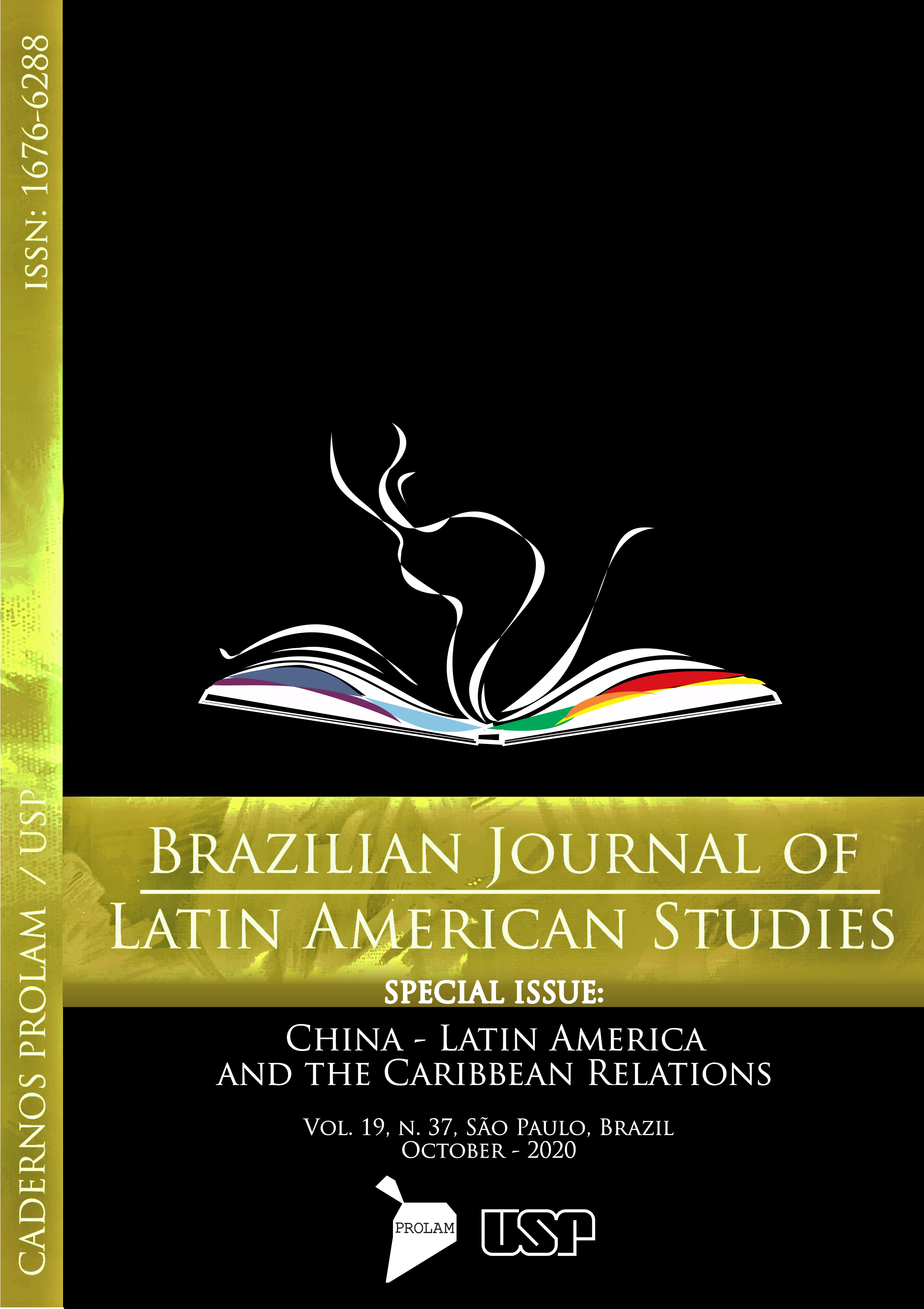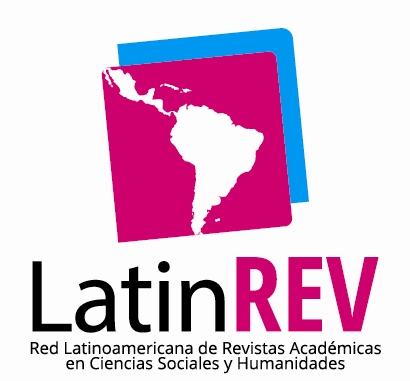Migração moderna para o exterior? Principais fluxos e projeções da migração chinesa na região sul-americana
o caso de Mercosul
DOI:
https://doi.org/10.11606/issn.1676-6288.prolam.2020.169822Palavras-chave:
Migração chinesa, Ultramar, América do Sul, MercosulResumo
Com a “abertura” da República Popular da China (1978), a emigração de cidadãos da China Continental e de Taiwan teve um aumento significativo no número de emigrantes e na diversificação dos destinos por eles escolhidos. Esta expansão foi favorecida, entre outras questões, pela flexibilização das leis de imigração da China, pela abertura política e expansão da economia deste país para o exterior, bem como pelo aprofundamento do fenômeno da globalização que simplificou as comunicações, barateou o transporte e promoveu a criação de redes internacionais de migrantes. Como conseqüência, e no quadro das transformações nos padrões migratórios e comportamentais dos migrantes chineses registrados a partir das últimas décadas do século XX, verificou-se um maior fluxo de receitas de chineses ultramarinos para a região da América do Sul e Mercosul em particular. As características dessa migração no processo de integração sul-americana serão apresentadas a seguir.
Downloads
Referências
ASIAN ECONOMIC INTEGRATION REPORT 2019/2020. Demographic change, productivity, and the role of technology, november 2019. Disponible en: https://www.adb.org/sites/default/files/publication/536691/aeir-2019-2020.pdf. Acceso el 25/8/2020.
BOGADO BORDAZAR, Laura. Migraciones Internacionales. Influencia de la migración china en Argentina y Uruguay. Serie tesis, Instituto de Relaciones Internacionales, Universidad Nacional de La Plata, Argentina, 2003.
BOGADO BORDAZAR, Laura. “Avances sobre la construcción de un apolítica migratoria del Mercosur. El caso de Argentina”, en: Caetano Geardo (coordinador), El Mercosur de las políticas públicas regionales, CEFIR, Uruguay, 2012.
CESARÍN, Sergio. “Ejes y estrategias del desarrollo económico chino: enfoques para América Latina y el Caribe”, en: China y América Latina. Nuevos enfoques sobre cooperación y desarrollo. ¿Una segunda ruta de la Seda? Buenos Aires, BID-INTAL, 2005.
CEPAL. Globalización y Desarrollo. Organización de Naciones Unidas, 2002. Disponible en: https://repositorio.cepal.org/bitstream/handle/11362/2724/2/S2002024_es.pdf. Acceso: 30/9/2020.
DE FREITAS, Sonia María. “Brasil, desde Hong Kong a Sao Paulo”, en: Morimoto, Amelia (Directora), Cuando Oriente llegó a América. Contribuciones de inmigrantes chinos, japoneses y coreanos. Banco Interamericano de Desarrollo, 2003. Disponible en: https://issuu.com/idb_publications/docs/book_es_10298. Acceso el: 21/8/2020.
MÁRMORA, Lelio. Las políticas de migraciones internacionales. Buenos Aires, OIM, Alianza, 1997.
NAISBITT, Joseph. Megatrends Asia. The Eight Asian Megatrends that are Changing the World. Nicholas Brealey Publishing, London, 1997.
NATIONAL BUREAU OF STATISTICS OF CHINA. Disponible en: http://www.stats.gov.cn/english/Statisticaldata/nsdp/201508/t20150819_1232260.html. Acceso: 20/8/2020.
NOVICK, Susana. “Una nueva ley para un nuevo modelo de desarrollo en un contexto de crisis y consenso”. En Giustiniani, Rubén, Migración: Un derecho humano, Buenos Aires: Prometeo, 2005.
OIM (Organización Internacional para las Migraciones). Perfil migratorio do Brasil, OIM, 2009.
OIM (Organización Internacional para las Migraciones). Informe sobre las Migraciones en el Mundo 2011. Comunicar eficazmente sobre las migraciones, OIM, 2011.
OIM (Organización Internacional para las Migraciones). La migración en la Agenda 2030. Guía para profesionales, Ginebra, 2018.
ONU (Organización de Naciones Unidas). International Migration Report 2017, Department of Economic and Social Affairs Population Division. 2017. Disponible en: http://www.un.org/en/development/desa/population/migration/publications/migrationreport/docs/MigrationReport2017.pdf. Acceso: 19/4/2020.
PELLEGRINO, Adela. “Las migraciones internacionales. Impacto del Mercosur”, en: Las migraciones humanas en el Mercosur. Una mirada desde los derechos humanos. Observatorio de Políticas Públicas de Derechos Humanos en el Mercosur, 2009.
PNUD, Informe Sobre Desarrollo Humano 2009. Superando barreras: movilidad y desarrollo humanos, Nueva York, 2009. Disponible en: http://www.undp.org/spanish/. Acceso el: 20/8/20.
PNUD, Human Development Report. Work for Human Development, 2015. 2015. Disponible en: http://www.undp.org/content/dam/undp/library/corporate/HDR/HDR%202015/HumanDevelopmentReport_EN.pdf. Acceso el: 20/8/20.
SASSONE, Susana. “Problemática geodemográfica en las fronteras interiores del MERCOSUR: una mirada desde el territorio argentino”, Anales GAEA Sociedad Argentina de Estudios Geográficos – Homenaje al Dr. Raúl Rey Balmaceda, Tomo 21-22, Vol. II (1997-2001), 2002.
SASSONE, Susana et al. “Políticas migratorias y ciudadanías en tensión” En: Migración y crisis global. Europa-América Latina: nuevas estrategias, nuevas desigualdades, Afers Internacionals 106-107, CIDOB, España, 2014.
STAIANO, María Francesca. (coord.). El ordenamiento jurídico de la República Popular China en el marco del Derecho Internacional: planificación familiar, migraciones y cooperación, Instituto de Relaciones Internacionales e Instituto Confucio, UNLP, 2014.
Downloads
Publicado
Edição
Seção
Licença
Copyright (c) 2020 Laura Lucía Bogado Bordazar

Este trabalho está licenciado sob uma licença Creative Commons Attribution-NonCommercial 4.0 International License.
A BJLAS adota a política de Acesso Livre (Libre Open Access), sob o acordo padrão Creative Commons (CC BY-NC 4.0). O acordo prevê que:
- A submissão de texto autoriza sua publicação e implica compromisso de que o mesmo material não esteja sendo submetido a outro periódico. O original é considerado definitivo;
- Autores mantêm os direitos autorais e concedem à revista o direito de primeira publicação, com o trabalho simultaneamente licenciado sob a Licença Creative Commons Attribution (CC BY-NC 4.0).
- Autores têm autorização para assumir contratos adicionais separadamente, para distribuição não-exclusiva da versão do trabalho publicada nesta revista (ex.: publicar em repositório institucional ou como capítulo de livro), com necessário reconhecimento de autoria e publicação inicial nesta revista;
- Autores têm permissão e são estimulados a publicar e distribuir seu trabalho online (ex.: em repositórios institucionais, repositórios específicos, ou na sua página pessoal) após o processo editorial, já que isso pode gerar alterações produtivas, bem como aumentar o impacto e a citação do trabalho publicado (Veja O Efeito do Acesso Livre).
- O detentor dos direitos autorais da revista, exceto os já acordados no acordo sob a Licença Creative Commons Attribution (CC BY-NC 4.0), é o Programa de Pós-graduação Integração da América Latina.
É permitida a cópia, reprodução e distribuição de textos, imagens, dados e demais arquivos, no todo ou em parte, em qualquer formato ou meio, desde que sejam observadas as regras da licença Creative Commons (CC BY-NC 4.0):
- O uso do material copiado e ou reproduzido no todo ou em partes deve se destinar apenas a fins educacionais, de pesquisa, uso pessoal ou outros usos não comerciais. Reproduções para fins comerciais são proibidas;
- O material pode ser copiado e redistribuído em qualquer suporte ou formato;
- A reprodução deverá ser acompanhada da citação da fonte na integra incluindo o(s) nome(s) do(s) aturoes(s), no seguinte formato: Fonte: Revista Cadernos Prolam/USP. Brazilian Journal of Latin American Studies;
- Os nomes e endereços informados na revista serão usados exclusivamente para os serviços prestados por esta publicação, não sendo disponibilizados para outras finalidades ou a terceiros.













